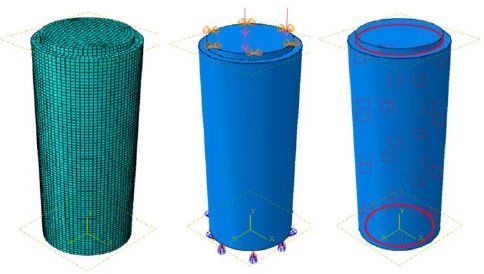Optimization of Concrete Mix Design for UPVC Tube Encased Columns: A Study
DOI:
https://doi.org/10.5281/zenodo.11082255Keywords:
M20, Strength, UPVC, CFTCAbstract
This study focuses on assessing the load-carrying capacity of UPVC tubes filled entirely with concrete by subjecting them to axial loading until failure occurs. A total of eighteen UPVC tubes, each with a diameter of 150mm as well as a thickness of 7.11mm, as well as effective lengths ranging from 500mm to 700mm were used. M20 grade concrete sourced from two different mixes with aggregate sizes of 6.3mm as well as 10mm was placed inside the tubes to create UPVC concrete-filled tube (CFT) column samples. These column specimens were then tested for axial loading using a UTM with a capacity of 1000kN, as well as load-displacement as well as stress-strain curves were recorded. The failure mode observed in all columns was local buckling, with increased strength noted as the length of the column increased, particularly in the mix with 6.3mm coarse aggregate compared to 10mm coarse aggregate. The experimental setup also included a study on the efficacy of Polyvinyl Chloride (PVC) confinement in short plain circular concrete columns, utilizing various diameters of PVC tubes (110mm to 250mm) with two confinement methods: full confinement as well as confinement with cut ends. The results indicated a significant increase in the ultimate load capacity of the columns with external PVC tube confinement, with enhancement ratios ranging from 4.16% to 15%. Additionally, the study revealed that UPVC CFT columns exhibited an approximate 1.6% increase in compressive strength compared to theoretical values.
Downloads

Downloads
Published
How to Cite
Issue
Section
License
Copyright (c) 2024 Ashish Redhu

This work is licensed under a Creative Commons Attribution 4.0 International License.











